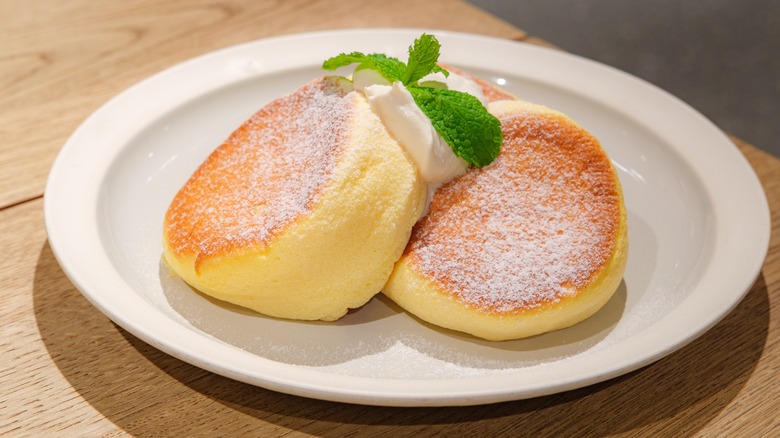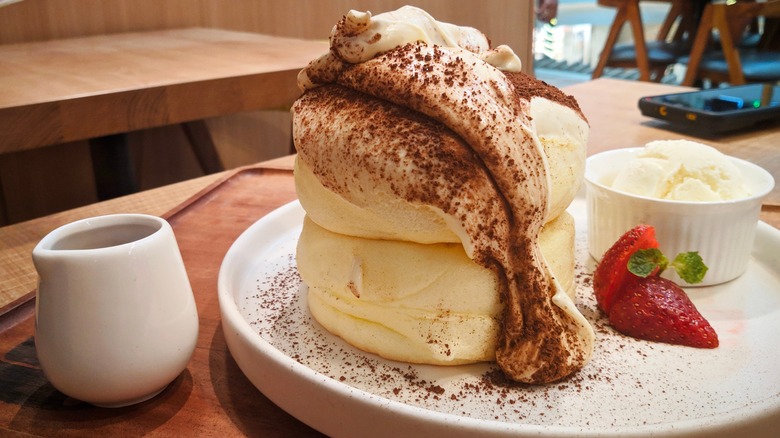The Meringue Swap For Simple Soufflé Pancakes
We may receive a commission on purchases made from links.
That simple stack of fluffy pancakes topped with a square of butter and golden syrup looks a tad different around the world. In Australia, small discs of pancakes are served with jam and cream during afternoon tea and Malaysia's Apam Balik is made with rice flour and a sweet filling of peanuts (via BuzzFeed). In fact, some countries enjoy their pancakes savory and spicy. Take, for instance, China's pan-fried scallion pancakes, Korea's kimchi pancakes, or the corn pancakes stuffed with melted cheese that are famous in Venezuela and Colombia.
In Japan, pancakes are thicker, fluffier, and melt away like puffy clouds and thin air in the mouth. The fluffiest pancakes on earth, soufflé pancakes or Japanese pancakes, are believed to have been created to cater to Japanese tourists in Hawaii. Others insist that Hawaiian restaurants in Tokyo invented the jiggly pancakes that are now famous on social media (via Honolulu Magazine).
Regardless of how they came to be, Simply Recipes explains that soufflé pancakes are a delicious combination of delicate soufflés and thick, sturdy American pancakes. Unlike regular pancakes, however, soufflé pancakes are made by mixing egg whites with cream of tartar and sugar to make a French meringue first, which is then whisked into egg yolks to make the final batter. While this gives the pancakes the signature melt-in-the-mouth texture, it's also what makes soufflé pancakes incredibly tricky to master. There's, however, a simple solution: swap the meringue.
Swiss meringue makes soufflé pancakes more foolproof
Epicurious explains that while soufflé pancakes may look like regular pancakes, they're actually quite tricky to make — just like the notoriously difficult and frail French dessert that is soufflé. Much like a soufflé, Japanese pancakes can quickly deflate if the meringue isn't handled with care. To make things easier, Epicurious recommends swapping the temperamental French meringue for its more stable Swiss counterpart to make soufflé pancakes that are as infallible as they can possibly be.
While both meringues are made by whipping egg whites with sugar, French meringue is the easier one of the two but also the trickier one (via MasterClass). French meringue is mostly used in recipes that require the whisked eggs and sugar to be folded into a batter and baked, which then makes the end result, aka soufflé pancakes, rise into tall towers with a feathery light texture. French meringue, however, can also be unstable and cause the pancakes to deflate into puddles at the end.
Swiss meringue or meringue cuite, on the other hand, uses heat to make the soft and foamy mixture more stable. Egg whites and sugar are generally whisked over a double boiler till a meringue, that's denser than its French counterpart, forms. Although it is relatively more sturdy, it tends to have less volume compared to French meringue. Epicurious claims that using Swiss meringue, however, doesn't compromise on the pancake's dainty texture and makes it a lot less prone to deflating into an eggy mess when cooked.

